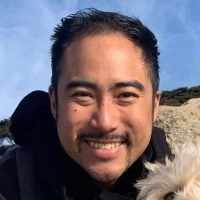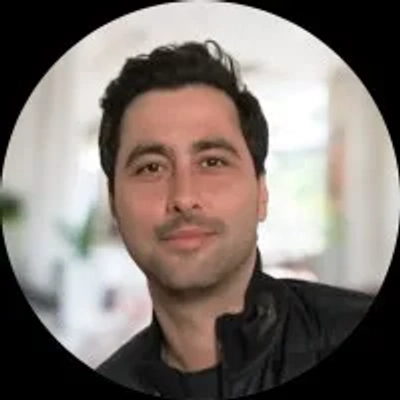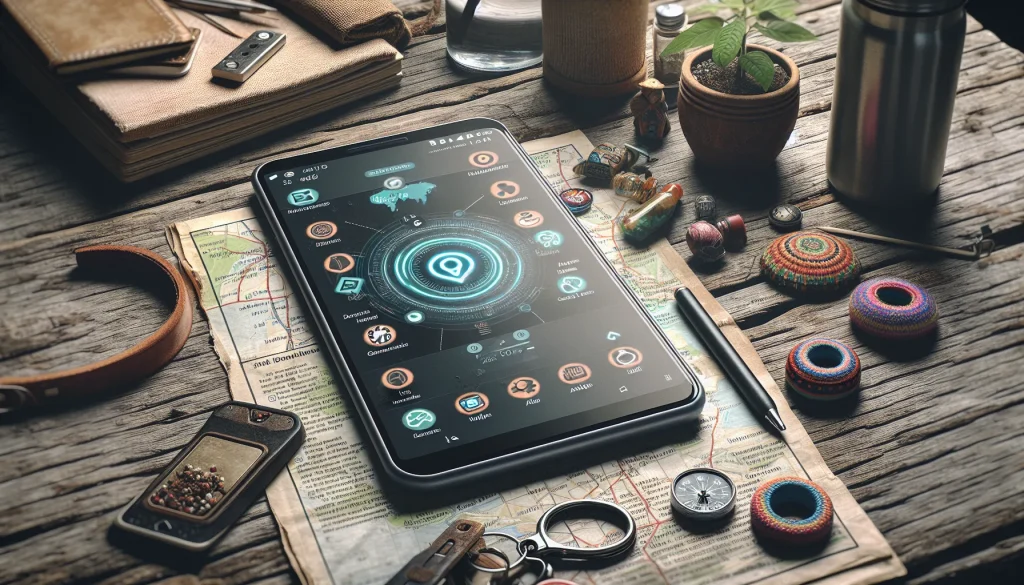Travelers are harnessing the power of AI to make a positive impact in communities around the world. This article showcases real-world examples of how artificial intelligence is being used to empower local businesses, bridge language gaps, and support charitable efforts. Drawing from the experiences of globe-trotters and insights from experts, discover innovative ways AI is transforming travel into a force for good.
- AI Empowers Thai Vendor at Local Market
- Automating Ride Distribution for Mexico City Drivers
- Creating Localized Digital Skills Content Abroad
- Bridging Language Gaps with Artisans
- Translating Coding Resources for Romanian Youth
- Supporting Portuguese Businesses with AI Translation
- Uncovering Hidden Local Gems with AI
- Promoting Filipino Crafts through AI Marketing
- AI Assists in Finding Underfunded Charities Abroad
- Sharing Repair Manuals with Local Mechanics
- Visualizing Tourism Data for Southeast Asian Communities
- Connecting Travelers with Local Volunteer Opportunities
AI Empowers Thai Vendor at Local Market
Last year, I spent time in a rural part of Thailand where my family is from—think rice paddies, motorbikes, and outdoor markets. There wasn’t a tech conference in sight. But here’s where AI showed up in the most unexpected way.
At the local night market, one of the fruit vendors—a grandma named Mae Noi—had her granddaughter helping her translate prices and chat with tourists using Google Translate. However, it was clunky and slow, and she felt embarrassed when it broke down mid-conversation. So I sat with them and helped her set up a custom GPT-based chatbot on her phone (via Poe by Quora) trained on basic vendor phrases—”This is fresh today,” “Want to try one for free?” “We can give you a discount if you buy two.” She tapped it, and it would speak in clear English, French, or Chinese depending on the tourist.
That tiny tool doubled her weekend sales, and more importantly, gave her the confidence to banter and laugh with tourists again. She wasn’t hiding behind the stall anymore. She was animated, teasing people into buying mangoes like a pro. And now other vendors are asking her how she did it.
So yeah, this wasn’t some formal give-back program. It was me, with a coconut in one hand, showing a grandma how to use AI like a superpower. No fancy setup. Just Poe, a phone, and a real conversation about what she wanted to say to the world.
 Derek Pankaew
Derek Pankaew
CEO & Founder, Listening.com
Automating Ride Distribution for Mexico City Drivers
When I first started using AI to automatically identify underbooked drivers in tourist-heavy areas, I had no notion it would change lives as it has.
At Mexico-City-Private-Driver.com, I use AI to redistribute rides in real-time, especially during holiday periods when some drivers can go days without a single client. I created a custom automation using the platform Make.com to bridge driver gaps, pairing different drivers based on location and vehicle type. I was able to offer drivers last-minute rides that I obtained through affiliate partnerships with local boutique hotels and Airbnb hosts.
One moment stands out: a retired military veteran turned driver named Jose was having a tough time making a living when he moved to CDMX. One particular night in Coyoacán, my system discovered he was only 500 meters from a couple who were delayed because their Uber had cancelled. We recouped the ride and reassigned it through the AI-based automation. He earned $78 USD for that ride, and the generous tip that it also included turned into a 6-day private hire that the couple consummated with Jose directly.
Now that I have implemented this system in early 2024, drivers have decreased their idle time by 34% and have increased their repeat bookings by 41%, which has made a noticeable difference to single-vehicle drivers in local barrios, and not just fleet operators.
This is more than just using automation. It is about using AI to quietly but efficiently add income to the possibly forgotten parts of the city by converting logistics into livelihood.
 Martin Weidemann
Martin Weidemann
Owner, Mexico-City-Private-Driver.com
Creating Localized Digital Skills Content Abroad
When visiting rural communities during business travels, I use AI content generation tools to create educational materials in local languages that address specific challenges these communities face, particularly around digital literacy and online business development. The AI assistance allows me to quickly develop relevant, culturally appropriate content that community members can continue using long after my departure.
During a trip to rural Thailand, I worked with local educators to identify digital skills gaps that were limiting economic opportunities for young people in their community. Using AI translation and content creation tools, I developed a series of tutorials about basic computer skills, online communication, and digital marketing concepts translated into Thai with culturally relevant examples. The AI tools enabled rapid content creation that would have taken weeks to develop manually, allowing me to focus on ensuring the materials addressed actual community needs rather than spending time on translation and formatting. Six months later, the local school reported that students were successfully using these materials to help family businesses establish an online presence, creating economic benefits that extended far beyond my initial visit.
 John Pennypacker
John Pennypacker
VP of Marketing & Sales, Deep Cognition
Bridging Language Gaps with Artisans
During a recent business trip to Mexico, I used Google Translate’s conversation mode to facilitate meaningful exchanges with local artisans who wanted to share their traditional craft techniques but lacked English fluency. The AI-powered real-time translation enabled detailed discussions about their creative processes, business challenges, and cultural significance of their work that wouldn’t have been possible through basic gestures or phrase books.
The most impactful moment came when I used the translation tool to help a ceramic artist explain her traditional glazing methods to a group of visiting design students who were struggling to understand her Spanish instructions. By providing real-time translation, I enabled knowledge transfer that benefited both the artisan (who gained appreciation for her expertise) and the students (who learned authentic techniques).
This experience demonstrated how AI can bridge communication gaps that prevent meaningful cultural exchange and mutual learning. The technology transformed what could have been superficial tourist interactions into genuine knowledge sharing that honored local expertise while facilitating cross-cultural understanding.
 Aaron Whittaker
Aaron Whittaker
VP of Demand Generation & Marketing, Thrive Internet Marketing Agency
Translating Coding Resources for Romanian Youth
While attending a gaming summit in Cluj-Napoca, I used AI-driven translation tools to support a local nonprofit offering coding classes to underserved youth. Many of their materials were only in Romanian, which limited access for international volunteers. I used DeepL and GPT-based tools to quickly translate and localize lesson plans, ensuring the content retained both technical accuracy and cultural relevance. Within two days, the organization had multilingual resources ready to share with visiting mentors from across Europe. The result was a more inclusive learning environment and stronger cross-border collaboration. This experience reminded me that AI isn’t just about business productivity—it can be a bridge that connects people across language and educational barriers, especially in tech-focused communities.
 Marin Cristian-Ovidiu
Marin Cristian-Ovidiu
CEO, Online Games
Supporting Portuguese Businesses with AI Translation
Using translation tools to close communication gaps and better assist small, locally owned businesses is one way I’ve used AI to give back to local communities while traveling.
During a recent trip to rural Portugal, for instance, I read handwritten menus and signs at tiny restaurants and markets without English translations using Google Lens’s built-in AI translation feature. In addition to giving me more confidence when navigating local areas, this enabled me to use reviews and social media to suggest these establishments to other tourists, even with precise information provided by real-time AI translation.
In order to add a personal and considerate touch to my stay, I also used ChatGPT (offline mode) to assist me in writing a brief thank-you note in Portuguese for a host family.
I was able to engage more deeply, support local businesses that were underrepresented, and build stronger relationships thanks to these AI tools, which made the experience feel more mutually beneficial.
 Oleh Stupak
Oleh Stupak
CEO & Co-Founder, Mgroup Shopify Agency
Uncovering Hidden Local Gems with AI
When I travel, I use AI to contribute to local communities by identifying and supporting local artisans and businesses. Recently, while visiting a small town renowned for its crafts, I used an AI-powered app designed to uncover hidden gems based on user-generated reviews and local insights. This tool helped me find a family-run pottery shop that wasn’t on the typical tourist radar.
By visiting, purchasing, and sharing my experience on social media, I helped boost their visibility and sales. This approach not only supports local economies but also enriches my travel experience by connecting me with authentic cultural expressions. The AI tool acted as a bridge, connecting travelers like me with the heart of the community.
In essence, leveraging AI to engage with local communities transforms travel into a meaningful exchange: “When technology meets tradition, everyone benefits.”
 Ajinkya Thete
Ajinkya Thete
CEO, CMO, NeonXpert Custom Signs
Promoting Filipino Crafts through AI Marketing
Having a business that operates fully remotely, using AI and automation made our business possible. There was a time when I was in the Philippines, in the province of Kalinga, where I visited a community whose main source of income was selling handmade crafts. I was moved by their stories, and seeing the handmade crafts amazed and inspired me greatly. After learning that they didn’t have the knowledge to market their crafts online, I offered to help them promote their products on the internet. I knew that it was the least I could do to help.
I assisted them in creating a Facebook page on Meta and taught them how to market their products by posting on social media. I provided them with tips and steps on how to maximize AI to help them promote. I taught them about using ChatGPT to generate descriptions of their products and promotional messages in English and Tagalog (the local dialect). I explained various ways to use AI to help them reach the market. With limited time, I had to ensure that they learned something to improve their livelihood.
 Mimi Nguyen
Mimi Nguyen
Founder, Cafely
AI Assists in Finding Underfunded Charities Abroad
When we run team-building events abroad, we often include a charitable element — like building food parcels or donating essential supplies. AI has become a powerful research assistant in this process. We use tools like ChatGPT to quickly identify the most urgent local causes and grassroots organizations that may not show up on page one of Google. One example was during a client event in Lisbon, where AI helped us discover a small, underfunded shelter supporting migrant women and children. We tailored the donation activity around their needs, making a real impact where it mattered most.
 Charles Berry
Charles Berry
Co Founder, Zing Events
Sharing Repair Manuals with Local Mechanics
I don’t use AI all that often to give back to communities when I travel. I do most of my interactions quite naturally when I’m scoping out potential rental spots or just riding around.
There’s one thing that worked out well, though. I was struggling with my rental bike, and this local mechanic was gracious enough to help me out, although we couldn’t talk much. I whipped out my phone’s camera translator and showed him what was wrong, and he fixed it in about 10 minutes. It turned out he had been working on motorcycles for three decades but never had access to some of the newer repair manuals. So I downloaded some PDFs and used the translator to have him read through them. He liked it a lot!
That’s the closest to high-tech I can get. It’s almost always just sharing a beer and trying to gesture that you can’t forget.
 Carlos Nasillo
Carlos Nasillo
CEO, Riderly
Visualizing Tourism Data for Southeast Asian Communities
I once used AI during a trip to help a local community in Southeast Asia better understand visitor patterns so they could boost their tourism responsibly. I gathered data on tourist arrivals, peak visiting times, and popular spots by using an AI-driven analytics tool that helped visualize the data in an easy-to-understand format. This information was shared with the local tourism office, which then tweaked their management strategies to better distribute visitor flow and develop less-known areas to avoid over-tourism in popular spots.
The platform I used was called Tableau, which is fantastic for data visualization and making complex information straightforward. It really helped the community leaders make informed decisions which directly benefited them economically and environmentally. For anyone looking to use AI in a meaningful way while traveling, I’d recommend finding tools that not only gather data but also help you present it in a manner that’s usable for local folks. It’s all about making a positive impact, however small it may be.
 Alex Cornici
Alex Cornici
Marketing & PR Coordinator, Pork Chop Recipes
Connecting Travelers with Local Volunteer Opportunities
Insofar as we want to reciprocate with the local communities we visit, AI can become a powerful intermediary between the intent to travel and the needs of the local community. At RedAwning, we integrated Benevity’s Community Investment platform into our guest portal, enabling Benevity’s AI engine to analyze guest profiles, including travel dates, interests, and location – and surface vetted, high-impact volunteer and donation opportunities in real-time.
For instance, while staying at our Charleston, South Carolina property, the platform’s algorithm recommended we partner with the Charleston Youth Science Center, due to critical after-school STEM needs in the city and our guests’ interest in furthering education. Visitors were able to effortlessly register via the portal to teach a practical robotics class to students in need at a workshop on location (ensuring they were able to contribute positively to both their own travel experience and the surrounding area they visited).
 Kristina Bronitsky
Kristina Bronitsky
Director of Consumer Marketing, RedAwning







